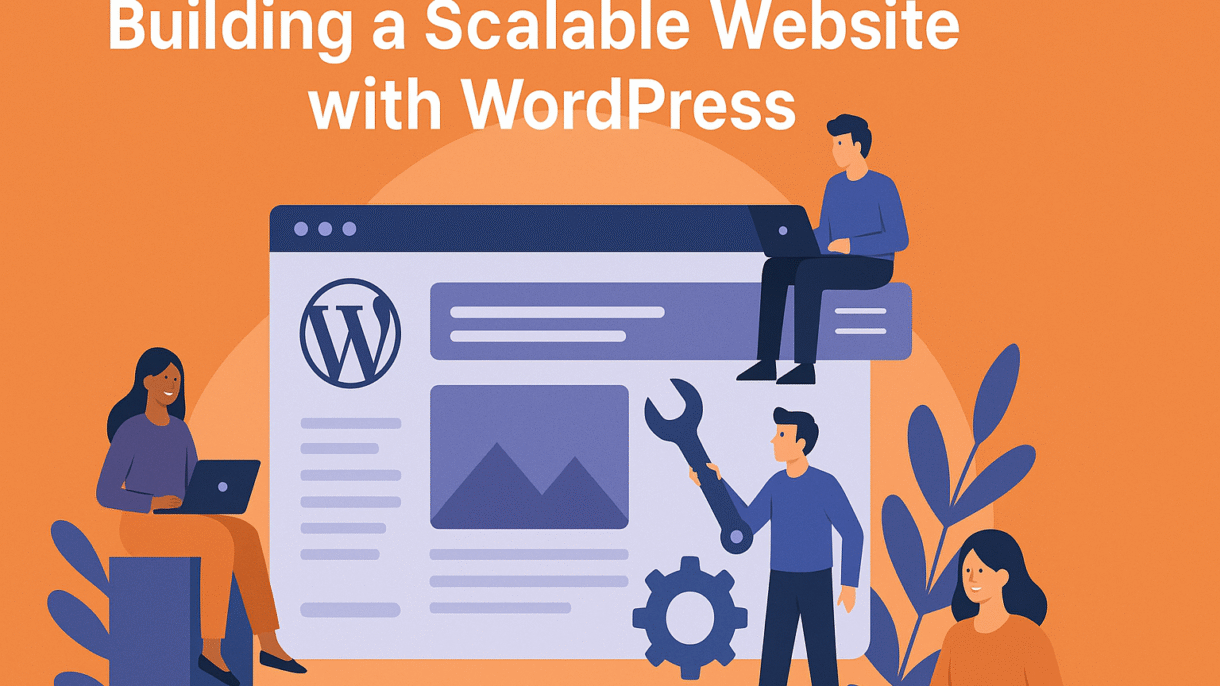Whether you’re launching a startup or expanding an existing business, scalability should be at the core of your web design. A scalable website can grow with your audience, content, features, and traffic—without crashing or needing a complete overhaul.
WordPress is one of the most powerful platforms for building scalable websites, but only if you plan correctly from day one. In this guide, I’ll walk you through the key strategies to ensure your WordPress site is built to grow.
- Choose the Right Hosting PlanScalability starts with hosting. Choose:
Cloud Hosting (like Cloudways or Kinsta)
Managed WordPress Hosting for performance and support
Scalable Infrastructure with automatic resource upgrades
Avoid shared hosting if you expect traffic spikes. - Pick a Lightweight, Flexible ThemeUse a well-coded, performance-optimized theme like:
Astra
GeneratePress
Kadence
These themes work with page builders and adapt easily as your content and layout needs grow. - Use Scalable Page Builders and EditorsChoose tools that won’t bloat your site:
Elementor (with optimization practices)
Gutenberg Blocks (native and lightweight)
Bricks or Oxygen (developer-friendly and scalable)
Keep layouts modular so you can duplicate or expand sections easily. - Keep Plugins Lean and High-QualityInstall only necessary, well-supported plugins. Too many low-quality plugins lead to:
Slow loading times
Security vulnerabilities
Conflicts during updates
Use all-in-one tools (e.g., Rank Math for SEO, WP Rocket for performance). - Build with SEO in Mind from the StartScalable traffic requires visibility. Focus on:
Structured content and headings
Meta descriptions, schema, and alt text
Clean URL structures
Sitemaps and indexing
Install SEO plugins like Yoast or Rank Math and configure them early. - Design for Content ExpansionCreate templates and reusable content blocks for:
Blog posts and article hubs
Product or service pages
Case studies or portfolios
Use custom post types and taxonomies if needed for future growth. - Optimize Database and Media ManagementAs your site grows, so will your files. To stay fast:
Use image optimization tools (ShortPixel, WebP)
Clean your database regularly (WP-Optimize)
Use lazy loading and a content delivery network (CDN) - Prepare for Traffic SpikesIf you plan to scale traffic through ads or viral content:
Use a CDN (like Cloudflare)
Enable caching (with plugins or server-side)
Monitor server response times
Use uptime monitoring tools (like UptimeRobot) - Secure Your Website from the BeginningSecurity issues get bigger with scale. Protect your site with:
Wordfence or iThemes Security
Regular backups (UpdraftPlus)
Strong passwords and 2FA
SSL certificates - Track Performance and Scale IntelligentlyUse tools like:
Google Analytics and Search Console
WP Activity Log (user actions)
Query Monitor (performance tracking)
Hotjar or Microsoft Clarity (UX insights)
This helps you scale based on real data, not guesses.
How I Help Clients Build Scalable WordPress SitesI build WordPress sites with long-term growth in mind: fast, secure, and easy to update. Whether you’re starting lean or launching a full-scale platform, I create systems that are ready to grow with you.
Contact me to start your next scalable project.
Conclusion
Scalability isn’t about adding more—it’s about preparing for more. With the right foundation, WordPress lets you grow traffic, content, and business goals without breaking your website or your budget.
Plan smart, build light, and scale with confidence.
FAQsQ: Can WordPress really scale for large websites?A: Yes, with the right hosting, optimization, and development practices, WordPress powers some of the world’s biggest sites.
Q: Do I need a developer to build a scalable site?A: Not always. You can start small with builders, but a developer helps with custom features and performance.
Q: What happens if I outgrow my theme or hosting?A: You can upgrade hosting or switch themes, but it’s better to choose scalable options early.

